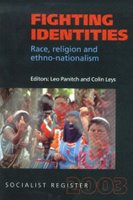The Lost Left
The Times of India (December 28, 2006)
Considerably modified version of the article can be found in RADICAL NOTES & ZNET
The events in Singur are signs of a crisis borne out of a disjuncture between the Left Front's pragmatic policies and the legacy of the movement and class interests that empowered it.For a long time, the open eruption of this crisis was evaded by the West Bengal government's success in convincing its mass base of its ability to manoeuvre state apparatuses for small, yet continuous, gains. It justified all its limitations and inefficacy by condemning the faulty Centre-state relationship and a larger conspiracy to destabilise limited reformist gains, for instance, those from reforms in the Bargadari system.
The allegation of conspiracy seemed tangible only to the extent that parliamentary politics drives every opposition party to encash the difficulties incumbent governments face — by peddling popular grievances for electoral gain. For illustration, one needs to just review the history of the exit-entry of governments and their economic policies over the past 20 years. There were economic grievances that contributed to the Opposition's success in destabilising governments and forming alternative ones, yet there was a remarkable continuity in economic and financial policies. Because of the Indian state's ability to contain popular opposition within the precincts of electoral democracy — the ritual of elections — it could evade any fundamental political economic crisis and did not have to deter from its neo-liberal commitments.
Once the Left in West Bengal chose to play by the rules of parliamentary democracy, it faced the constant threat of defeat in electoral competition. The internalisation of the need to evade this threat transformed its character, thus leading it to aspire beyond being a class party of workers and peasants. It had to become an all people's party — a party that could negotiate between diverse, dynamic and antagonistic interests.
A cosmetic radicalism though is advantageous in the states where it is the incumbent power. It can mobilise its traditional class base, by playing on victimhood, and rituals of national strikes. Alongside, it has been increasingly using the threat of capital flight to justify its concurrence with the national economic policies. Behind these usual mechanics of stabilising its position in the representative democratic set-up resides an essential dilemma for the official Left.
The historical legacy of the peasants and workers' movements has been both a boon and a bane. This has gravely severed its ability to use traditional means of state coercion for containing its mass base, forcing an informal accommodation or para-legalisation of the Left's traditional mass organisations — their transformation into ideological state apparatuses. Herein lies the danger.
Once these organisations are identified with officialdom, the grass roots are alienated and the scope for their independent assertion amplifies. In the history of Bengal's Left, this has happened many times — the most formidable one was the Naxalbari movement. Singur is the latest case.
One must question the motives of mainstream non-Left political parties like the Congress and Trinamul, which represent the interests of the landed gentry that use 'kishans' — hired labours and bargadars — for cultivation. This class, who the West Bengal government claims have consented to land alienation in Singur, join such movements essentially to obtain various kinds of concessions — a higher price for giving up land to the state and perhaps also for increasing the price for future real estate speculation around the upcoming industrial belt.
But there is a larger section of the landless peasantry and those frequenting nearby towns for work; for them, the struggles like that of Singur are existential ones. They do not possess any faith in neo-liberal industrialisation based on flexible, informal and mechanised labour processes. Recently, in many parts of the country, these sections of rural poor have been the object and subject of radical mobilisations.
It is the fear of their politicisation in the wake of its drive for competitive industrialisation, which is the real worry for the accommodated Left in West Bengal, especially CPM, which has traditionally resisted the mobilisation of the landless in the state, even by its own outfit.
Labels: Singur






0 Comments:
Post a Comment
<< Home